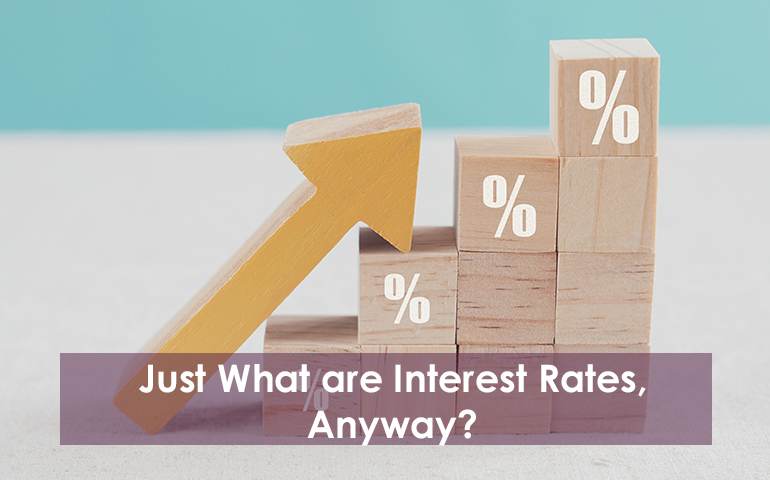
Just What are Interest Rates, Anyway?
by Chris Petry
It seems you can’t go a day without hearing about interest rates. No matter where you look, there’s an article or a news report discussing the effects of interest rates on consumer spending, personal loans, and mortgages. Financial gurus like Suze Orman, Kevin Leary, Mark Cuban, and yes, even the figurehead of this fair brokerage, Warren Buffet are interviewed regularly about it on cable news outlets. To say it’s a hot topic would be an underestimation tantamount to saying water is wet.
Just what are interest rates, though, and how do lenders arrive at those seemingly arbitrary headline-making figures? What market pressures influence the adjustment of said rates and are there other factors beyond ordinary economic fluctuations worth considering? All this and more below!
First, let’s define interest rates. Interest rates are essentially the upcharge you pay for borrowing money from another individual, company, or financial institution. It stands to reason that anyone who isn’t Mom and Dad might want a little return on their investment. Their investment being you. Come to think about it, Mom and Dad probably want a return on their investment too. They just accept your personal growth, health, and success as the payoff. Too bad banks don’t think that way! They want cold hard cash and they’ll get it, in the form of an APR, or Annual Percentage Rate.
Say you borrow $10,000 at an APR of 6%. The terms state you’ll pay off the loan in monthly installments that will last for 36 months. That’s $277.78 a month or $3,333.36 a year, barring interest. Factoring in the 6% interest rate, you’ll actually end up paying $304.22 per month. That’s a total of $951.90 in interest over the life of the loan.
Who sets these magical interest rates? Well, at the end of the day, the lender. Of course, there are a lot of factors that influence that decision. There’s your own credit worthiness. If you have less credit, a less reliable credit history, or no previous credit at all, you’ll rather expectedly receive a higher interest rate. Why? Well, you’re a higher risk borrower. Lenders want a guaranteed return on their investment and who can blame them? If you have a history of being delinquent or you’re a first-time borrower, lenders have no choice but to accept the possibility they might not get back what was invested. They compensate for this by charging more in interest.
Interest rates are also influenced by current economic conditions. You’ve heard about the Federal Reserve’s rate increases over the last year? Well, the Feds maintain that this is a tactical move to reduce the circulation of funds in the general marketplace. Why would they want to do that? Demand for goods and services is too high to meet current inventory and prices have increased as a result. When rates are increased, spending decreases and prices will drop.
As you can see, there are a multitude of reasons why you might pay more or less interest on your next loan. The good news? Interest rates are renegotiable. Improve your credit rating, put down more money on a new loan, or accept a shorter payback period and you might be able to bring that APR down at the point of lending or in the near future.
If you’ve got your eyes on your dream home but are worried about the current rates, it may not be to your best advantage to wait. You might miss out! Just because you accept the less-than-perfect terms outlined right now, doesn’t mean you’re locked into them for the life of the loan. With a little discipline, patience, and preparation, you might be able to get both the home of your dreams and the interest rate of your dreams. Okay, in a perfect world the interest rate would be zero, but would you lend somebody you’ve never met $200,000? I didn’t think so.





